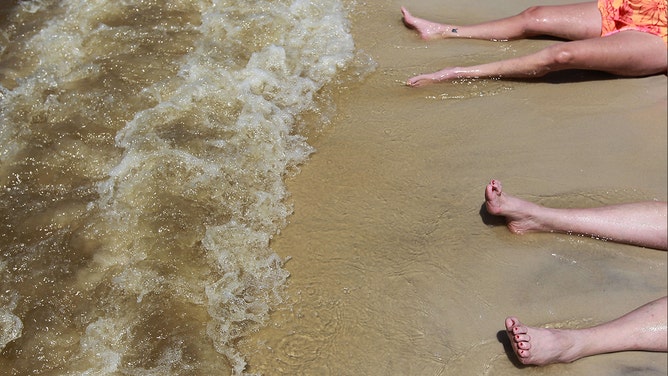Fecal matter posed risk at 90% of Texas beaches last year, report says. Here's how to track it
A report published in early July by the organization found that 90% (55 out of 61) of Texas beaches had potentially unsafe levels of fecal indicator bacteria on at least one testing day in 2022.
Replenishing our beaches: How sand gets from the sea floor back to the shore
The U.S. Army Corps of Engineers has been filling eroded beaches with sand up and down the East Coast and Gulf Coast for decades. Now they're working on widening the beaches this summer in parts of New Jersey. FOX Weather's Katie Byrne reports.
GALVESTON, Texas – Before you head out to relax on the beach in Texas, keep in mind there could be more floating in the water than you think.
Fecal contamination from urban runoff, sewage overflows and factory farms can contain pathogens that can threaten the health of swimmers across the U.S., but especially in the Lone Star state, according to Environment Texas.
A report published in early July by the organization found that 90% (55 out of 61) of Texas beaches had potentially unsafe levels of fecal indicator bacteria on at least one testing day in 2022.
TOP DANGERS TO WATCH OUT FOR AT THE BEACH THIS SUMMER

A new report shows 90% of Texas beaches -- 55 out of 61 -- tested positive for unsafe levels of fecal bacteria on one or more occasions last year.
(Environment America)
There were eight beaches last year that exceeded the safety threshold on 25% of days, with Cole Park Beach in Corpus Christi having higher bacteria levels on 54% percent of days tested, the analysis found.
Other Texas beaches found potentially unsafe for swimming at least once in 2022 were Ropes Park, Poenisch Park and Corpus Christi Marina in Corpus Christi as well as Texas City Dike and Seawall Boulevard in Galveston, according to Environment Texas.
"Even as Texans are back to enjoying the fresh sea breeze and splash of waves at the beach, pollution is still plaguing too many of the places where we swim," said Luke Metzger with Environment Texas. "Now is the time to fix our water infrastructure and stop the flow of pathogens to our beaches."
Scientists estimate 57 million cases of people getting sick annually in the U.S. from swimming in oceans, lakes, rivers and ponds. Those illnesses can include nausea, diarrhea, ear infections and rashes.
FLESH-EATING BACTERIA, PLASTICS IN SARGASSUM MAY POSE ‘TRIPLE THREAT’ TO PUBLIC HEALTH

(Before you head out to relax on the beach in Texas, more could be floating in the water than you think. / Getty Images)
Tracking Texas beaches
Nicole Powers, a researcher of bacterial contamination at Texas A&M University – Corpus Christi, said it is important to do what you can to protect yourself against potential fecal contamination in recreational waters.
"For instance, check TexasBeachWatch.com for recent water quality trends, and avoid getting in the water with open wounds on your skin or near storm drain outfalls," she said.
According to the website, on July 15, 2023, there were 14 Texas beaches that contained medium levels (between 35 and 104 colony-forming units (CFU)/100 ml) of fecal bacteria. When the counts are above this level, swimming is not recommended, and an advisory is issued.
Texas Beach Watch reports only on the enterococcus bacteria. It does not test for the vibrio vulnificus bacteria, which is naturally occurring in coastal temperate waters.
HOW TO TRACK YOUR BEACH'S WATER QUALITY

According to TexasBeachWatch.com, on Saturday, July 15, 2023, there were 14 Texas beaches that contained medium levels of fecal bacteria.
(Texas Beach Watch)
